7 Steps for Setting Up Your Home With AS

Ankylosing spondylitis (AS),a chronic inflammatory form of arthritis, can make tasks you do without thinking feel like major obstacles that increase your joint pain—and that includes maneuvering around your own home, whether you’re trying to make breakfast or simply use the bathroom. To help with these challenges, we spoke to the experts to learn seven must-try hacks for modifying your living space to make life with AS easier.
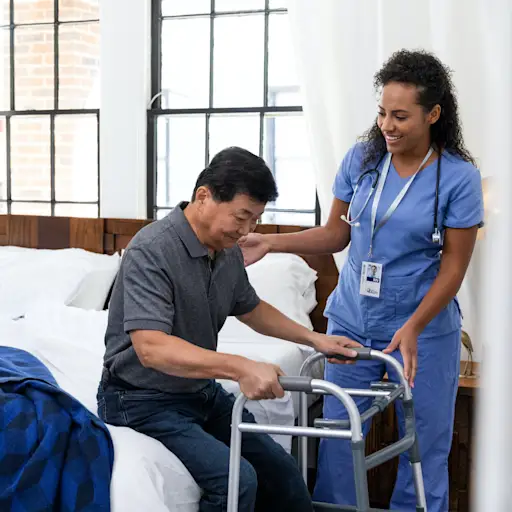
Why AS Can Make Navigating Your Home a Challenge
Chronic AS pain can lead to decreased mobility and range of motion, says Nikki Weiner, O.T.D., a licensed occupational therapist and certified ergonomic specialist in Pittsburgh, PA. This can lead to struggles around the home. “Certain daily activities tend to aggravate the body with AS,” adds Terence Starz, M.D., a clinical professor of medicine and occupational therapy in the division of rheumatology and clinical immunology at the University of Pittsburgh School of Medicine. Assistive devices and small changes can help you work around these stressors.

Step #1: Prevent Falls
People with arthritis are at increased risk of broken bones, according to the Arthritis Foundation. So one of the top things to consider when modifying your living space for AS is how to prevent falls. “For example, if you have to use a mobility device like a walker, you want to make sure you have nice clear pathways so you’re not at risk of falling or injuring yourself,” says Weiner. Installing slip mats in places like your bathroom and on steps ($20.99, Amazon) can also help you reduce fall risk, the Arthritis Foundation says.
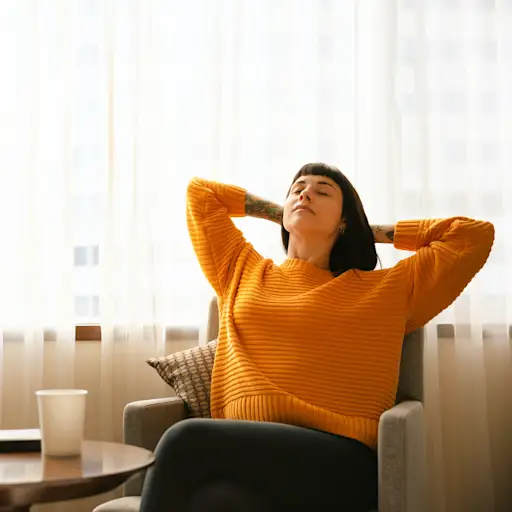
Step #2: Keep an Eye on Comfort
The spine is the main problem area for those with AS, says Dr. Starz, so thinking about how to ease back pain around the house is a must. “Seating needs to be supportive if you have chronic back pain,” says Weiner. "If you don’t have a couch or armchair that has good back support, consider something like a lumbar cushion that you can add to your favorite seat or couch.” It’s important to make sure your seating is easy to get out of, too: Firm, raised seating with armed rests can help make transitioning out of seating easier.
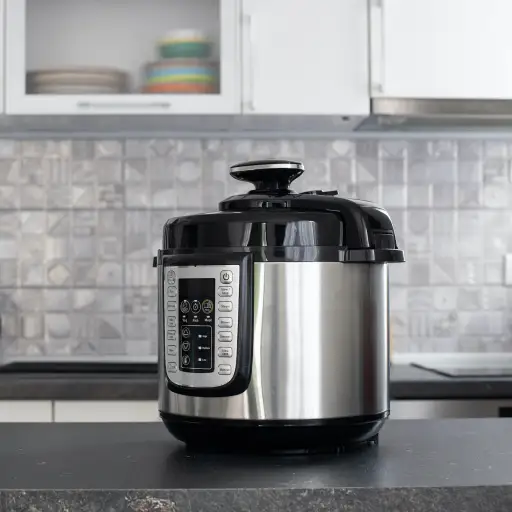
Step #3: Practice Kitchen Shortcuts
The kitchen can be a problematic area if you haveAS, what with all the twisting and turning that goes into preparingfood. Luckily, Weiner says, there are plenty of shortcuts you can take. “If you’re someone who has decreased standing tolerance, try using an instant pot or slow cooker on a countertop instead of trying to lift a heavy roast into the oven,” she says. Other appliances can help reduce your joint pain, too. Avoid the stress of repetitive chopping by using a food processor or a mezzaluna knife (curved with two handles;$39.95, Williams Sonoma),她说。
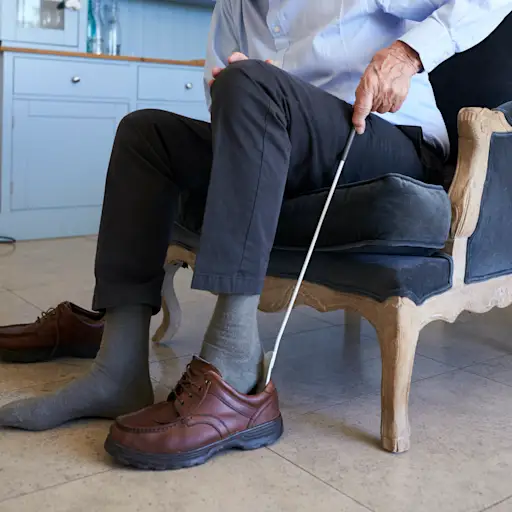
Step #4: Buy a Little Help
“Assistive devices that can be used for reaching can be helpful around the house no matter your ability level,” says Weiner. You can use them to help you dust a difficult location or thread your pantlegs. Similarly, using a sock aid ($19.99, Walmart)—an affordable device that helps you put on socks or tights easily without bending over—or a long-handled shoehorn ($28.99, Amazon) can be helpful when getting dressed if bending forward causes discomfort. “Another useful tool for dressing is a footstool to prop your feet up while you tie your shoes,” she adds.
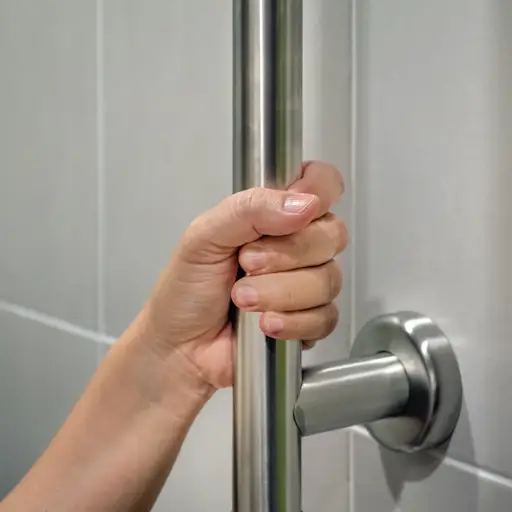
Step #5: Modify Your Bathroom
浴室可能会非常棘手,由于导航to tight spaces and wet surfaces. Thankfully, there are plenty of modifications you can make. A raised toilet seat, along with grab bars or toilet rails ($34.98, Home Depot) can help you make that transition with less joint pain, says Weiner. And go for a shower curtain rather than a glass door. “This creates more space for an entry and exit,” she says. “And if you need to use a shower seat or tub transfer bench, they tend to work a lot easier in a shower without a door.”

Step #6: Invest in Bath Tools
Speaking of bathrooms—the act of bathing itself can be taxing on inflamed joints due to the need to twist, bend, and scrub. “If you have limitedmobilityor experience discomfort when you need to make maneuvers like bending and twisting of the back, something like a long-handled sponge ($13.99, Amazon) or a suction-cup brush can help you with the action of bathing,” Weiner says. Another wise purchase is a handheld shower nozzle, which can give you access to your whole body without having to do a ton of turning, she recommends.
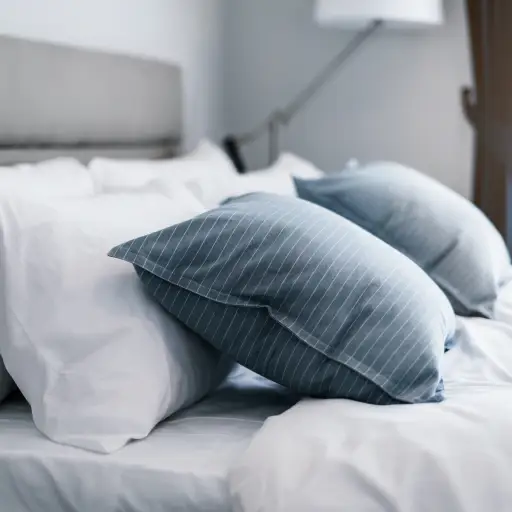
Step #7: Get Comfortable in Bed
Rest is vital for coping with AS fatigue, Dr. Starz says, so a supportive resting place is a must. “Go for a well-supported neutral position for the back while resting in bed,” says Weiner. You can use pillows to your advantage here by positioning one between the knees while lying on your side. Make sure your bed is the right height for you and consider adding bed rails ($88.99, Medical Supply Depot) that strap around your mattress: “These can help steady you as you transition in and out of bed and also make transitions from lying on your back to your side easier.”

The Bottom Line on Home Modifications With AS
The good news is there are endless creative possibilities to adapt your home for life with AS. That said, it can be overwhelming. “I tell people to take a day or two to take notes on what they are doing throughout the day to learn what triggering activities are making symptoms worse,” says Dr. Starz. “A recognition of that is so important because there are ways to modify our ways of daily living.” Working with an occupational therapist is always a wise move, he says, as they can help you come up with personalized solutions to your needs.
Home Modifications for Arthritis:The Arthritis Foundation. (2021.) “Adapting Your House When You Have Arthritis.”arthritis.org/health-wellness/healthy-living/daily-living/life-hacks-tips/adapting-your-house
Kitchen Tools for Arthritis:The Arthritis Foundation. (2021.) “Arthritis-Friendly Kitchen Tools.”arthritis.org/health-wellness/healthy-living/daily-living/life-hacks-tips/arthritis-friendly-kitchen-tools
Lara is a health writer, trauma-informed art therapist, and registered associate marriage and family therapist practicing in Los Angeles. She is also a former digital editor for HealthCentral, covering Sexual Health, Digestive Health, Head and Neck Cancer, and Gynecologic Cancers. In a past life, she worked as the patient education editor at the American College of OB-GYNs and as a news writer/editor at WTOP.com.

